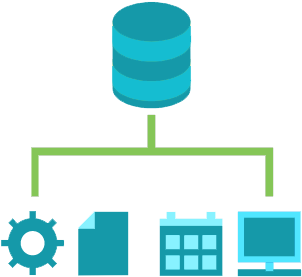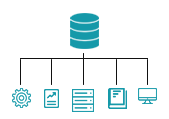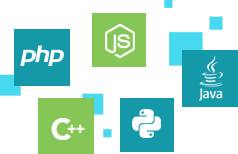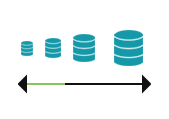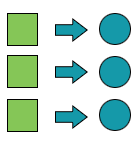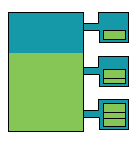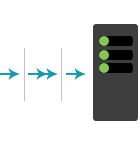February 27, 2022
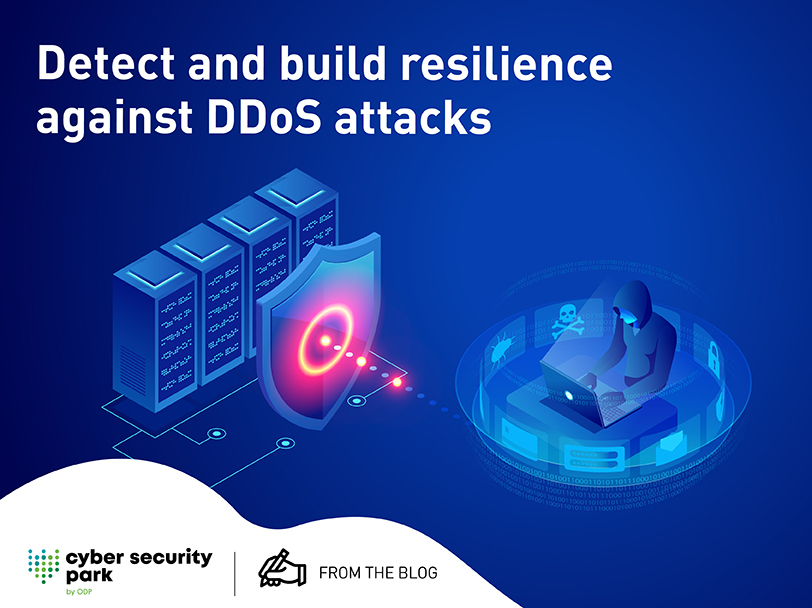
What are DDoS Attacks and how to protect your system from them?
With the rise in usage of cloud computing, big data has emerged as the means to improve value for businesses. It is being used and shared in large magnitudes. Often driven by financial gains and other malicious motives, the attackers keep exploring and exploiting the vulnerabilities of the cloud to steal information and data.
One of the top major threats for cloud today is Denial of Service (DoS) and Distributed Denial of Service (DDoS) attacks.
What are DoS and DDoS attacks?
You may have come across a common scenario where a website has been ‘brought down by hackers’. How does that happen? It happens because of a DoS attack.
With a DoS attack, the attackers overwhelm a website with too much traffic such that it cannot respond to any more requests. And it makes the attacked system unavailable to any legitimate user. In short, this means that hackers make a system unavailable to the users by flooding it with too much traffic.
A Distributed Denial of Service (DDoS) attack is a subclass of DoS attacks where hundreds of machines are used in the attack. Those compromised distributed machines are called zombies. With the power of multiple distributed machines, it is considered one of the most powerful weapons on the internet today.
The nature of a DDoS attack is extremely effective because it targets and overwhelms a server with traffic until it crashes. With this type of attack, hackers create too much traffic or congestion on a target application and delay the traffic flow for normal visitors. When an attack is orchestrated with the help of multiple connected online devices (e.g. mobile phones, PCs or routers) that are placed globally, it is collectively known as a botnet. Typically, these devices are infected with malware remotely controlled by an attacker. After establishing the botnet, the attacker can send remote instructions to each bot to direct an attack.
By leveraging the power of many machines and hiding the source of the traffic botnets attackers can easily carry out the DDoS attack. Because of this distributed traffic, security tools and teams cannot identify that a system is under DDoS attack until it is too late. Although what really sets these attacks apart from other cybercrimes is the low barrier to entry. Even a moderately well-organized group can perform a large-scale DDoS attack. Increasingly emerging a significant threat to businesses of all sizes, these attack services are available online for as little as $5. The low cost of entry makes these attacks attractive to unscrupulous competitors.
A typical DDoS assault doesn’t aim to make its way through the security which is quite common among different types of cyberattacks. However, a DDoS attack creates a sort of a smokescreen to take down security and make a website unavailable to legitimate users. Sometimes, these attacks are carried out to divert the attention of the target organization. While the target organization focuses on recovery from the DDoS attack, the cybercriminal may install malicious software or steal data.
History of DDoS attacks
In the year 2000, the first recorded DDoS attack was launched by a 15-year-old boy ‘Michael Calce’ also known as Mafiaboy. He hacked into the computer networks of not just one but various universities. He used these universities’ servers to operate a DDoS attack that crashed several major websites, including CNN, E-Trade, eBay, and Yahoo. Calce was convicted of his crimes in the Montreal Youth Court. He later became a ‘white-hat hacker’ who helped major companies in identifying vulnerabilities in computer systems.
Since then several media and software industries have been a target of DDoS attacks, especially the gaming industry. After all, if companies like Yahoo or eBay fall prey to DDoS attacks, is anyone even safe? There could be many reasons why a DoS attack is carried out, most frequently, for profit.
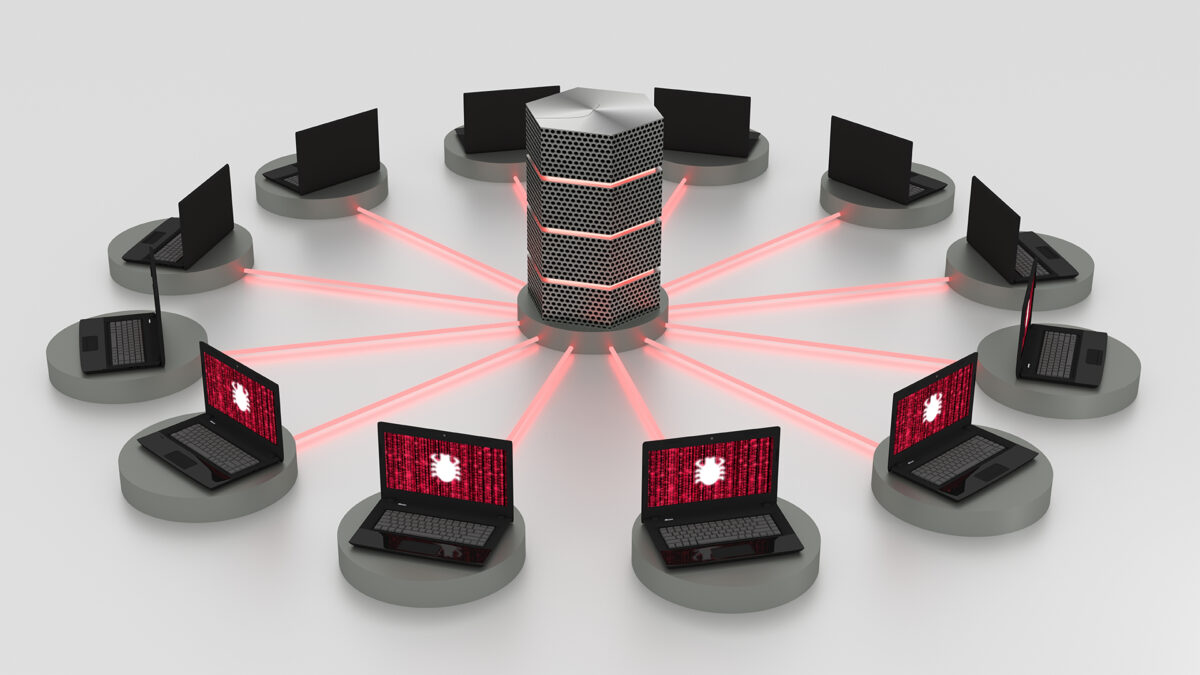
What are some ill-effects of a DDoS attack?
An impactful Distributed Denial of Service (DDoS) attack can hamper en entire base of your online consumers. Perhaps this is why, it is a weapon of choice for hacktivists, cyber-criminals and the likes.
Downtimes and crashes are common fallouts of a DDoS attack. Whether it comes in short intervals or as repeat assaults, the impact of DDoS attacks on a website or business can last long. Denial-of-service attacks come out of the blue and have disastrous financial and service level impacts. An average attack could cost an organization $50,000 in lost revenue and disruption costs. The incentive for those with malicious intent is clear.
From eroding consumer trust to forcing businesses to spend fortunes in compensations and an incident can trigger long-term effects while the organization tries to get back to normal functioning. On the other hand, normal visitors of the portal may experience an issue with the network speed, or even an outage, that is rare in day-to-day operations.
With the sudden rise in cryptocurrency values, the landscape of DDoS attacks is evolving and how. Simultaneously, it has turned online extortion into an attractive business model because it makes collecting anonymous payments much easier for criminal groups.
Types of DDoS Attacks
There could be several different ways how DDoS attacks are carried out, but the three most common categories are volumetric, protocol, and application layer.
Volumetric attacks are also called as floods. They are the most common way of DDoS Attacks. Statistically speaking, they contribute to more than fifty percent of the DDoS Attacks. As the name suggests, the attackers use a massive amount of traffic and flood the victim’s network with the sole purpose of consuming most of their bandwidth. As a result, the normal users are denied access.
The second most common type is Protocol attacks also known as state-exhaustion attacks. In this way of DDoS attack, protocols are exploited because of which service is denied. The attackers aim to exhaust the processing capabilities of the network infrastructure resources like servers, firewalls. Layer 3 and Layer 4 protocol communication are targeted which lead to denial of service.
Next is Application layer attacks, also known as OSI layer 7 attacks. Here, the attackers target web servers, web application platforms, and specific web-based applications instead of the entire network. These attacks exploit the weakness in the application, vulnerabilities of an application, or target higher-layer like HTTP/HTTPS (Hypertext Transfer Protocol/Secure) and SNMP (Simple Network Management Protocol). It consumes lesser bandwidth than other types of attacks. This type of attack can be harder to detect since it doesn’t show a sudden increase in traffic.
With more sophisticated technology emerging every day, DDoS techniques and types are also evolving. Now even the attackers blend two or more types of DDoS attacks to increase their chances of a successful attack. Many criminal groups are now combining volumetric and application-layer attacks to confuse and distract operations teams, tying up IT resources so that they can execute their real mission.
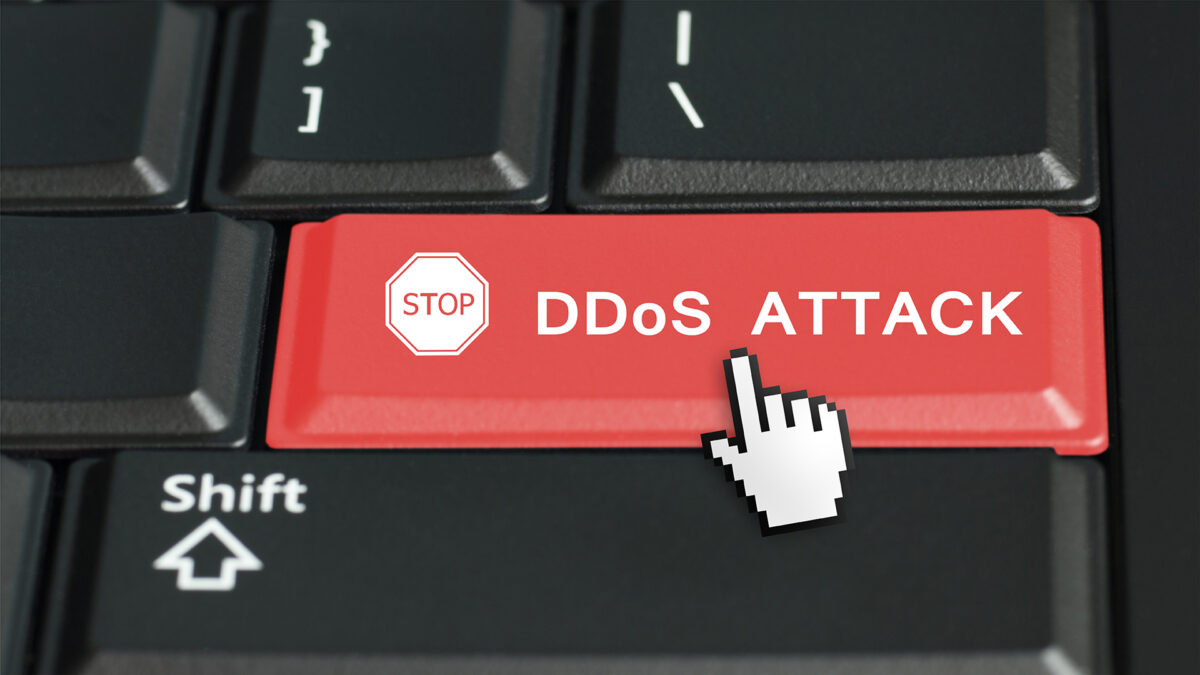
How can a DDoS attack be mitigated?
DDoS attacks are dangerous from two angles: power and accessibility.
Practically, one of the greatest concerns in mitigating a DDoS attack is to primarily differentiate between attack traffic and normal traffic. Especially, when we know that DDoS traffic arrives in more than one form. For instance, a new product has been launched on the website and it brings along elevated levels of traffic with eager customers from across the world. In such a case, it wouldn’t be a good idea to cut off all traffic. If it involves known attackers, then it is the first reaction is to alleviate them soon. Then move to the next step and integrate more advanced protection techniques that analyze and only accept traffic that is legitimate.
But the difficulty remains unchanged as differentiating between the real customers and the attack traffic is hard. Mitigation techniques usually focus on limiting traffic without discriminating. It may throw good traffic out along with the malicious ones. Furthermore, if the nature of the attack is more complex, then the chances are high that it will be quite difficult to distinguish between the normal traffic and the attack traffic. However, the goal of the attackers is to blend in as much as possible, making mitigation efforts as inefficient as possible.
Protection against DDoS attack with Oman Data Park
DDoS protection with ODP involves a variety of strategies in order to counter different trajectories.
It begins with detecting emerging application-level threats. Identifying an attack early and determining your vulnerabilities is a key strategy to fight DDoS attacks.
Real-time security information collected by our state-of-the-art technology and systems is used to shut down suspicious botnet activity. Oman Data Park provides around the clock security with our enhanced Security Operations Center. These trained professionals conduct security testing, active directory audits, and threat intelligence services. Their training and experience equip them to deal with any attacks directed against your company.
Combining services is the best way to build a better security system for your business. DDoS attacks are often a cover for some other penetration of your security perimeter. In addition to our DDoS protection, we can use the data collected to provide even better protection against other cyber threats. All of these key services are aligned with your organization’s security and peace of mind as a priority. Therefore, three tiers services are offered: Silver, Gold, and Platinum to cater to all types of enterprises.
Key Benefits
- Detect and block emerging application-layer DDoS attacks
- Deploy a turnkey solution to stop threats immediately
- Prevent illegitimate botnet communications by leveraging real-time security intelligence
- Mitigate volumetric attacks
- Integration of Functions and Processes
- Flexibility and Scalability to grow with your business needs
Protecting your networks and business operations is an essential part of our Cyber Security Services. We focus on 24/7 monitoring and protection to identify and respond to potential threats even before they begin to cause problems for your business. Our managed services and automated processes ensure easy Compliance with Security and Data Requirements.
While there’s only little you can do to prevent a DDoS attack, but by being armed with the right tools, techniques and service provider partners, you can mitigate the effects of such an attack.
With Oman Data Park, you too can prepare your organization with the best defense strategies against DDoS attacks. Leveraging an automated mitigation process, take control over cybersecurity, build a powerful strategy and transformational roadmap to secure operations, save your business from preventable losses and realize your long-term goals.
To know more, reach out to us via phone at +968 2417 1111 | +968 24171195 or email support@omandatapark.com |sales@omandatapark.com











